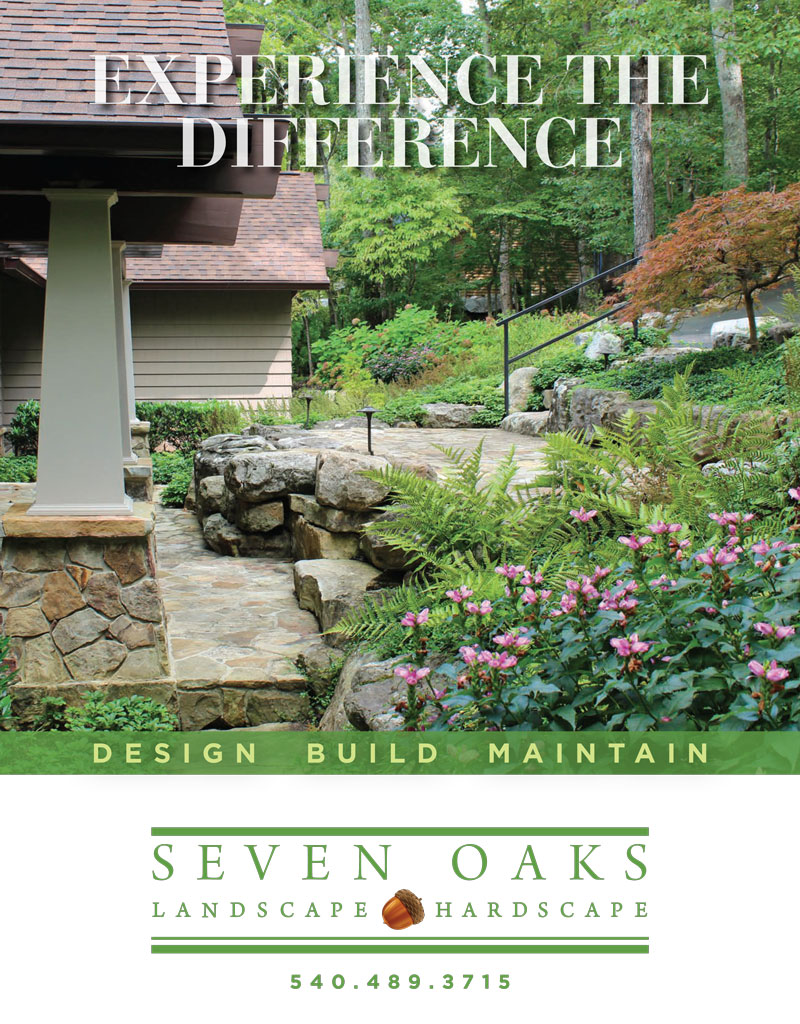Go With The Flow | Permeable Hardscape Offers Eco-Friendly Outdoor Spaces
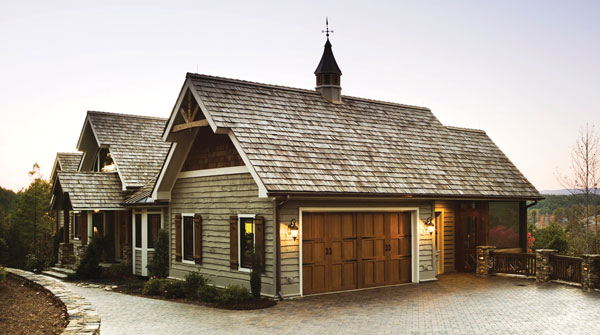
It’s hard to find a home without hardscape. Whether it’s a driveway, walkway, front porch, an entry around an exterior door, or a backyard patio, virtually every home needs some kind of hardscaping to help make outdoor areas more usable. Oftentimes, these zones are constructed with materials such as a slab of concrete or mortared pavers. But if you’re looking to create a new feature on your property, or to replace an existing surface, there’s another option you should consider: permeable hardscape.
Around this time of year, many homeowners are eager to begin preparing their outdoor spaces for spring and warmer weather. If you’ve been experiencing any flooding, muddy or soggy areas, or are envisioning an expanded outdoor living space this season, you might be thinking about installing or upgrading the hardscape on your property. There are many ways to accomplish this, but an increasingly popular choice is permeable hardscape. Like its name suggests, permeable hardscape allows water to pass through the materials and into the soil beneath, and it has several positive attributes.
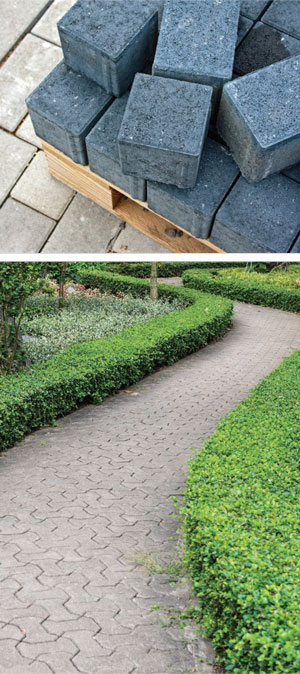 The positives of permeable
The positives of permeable
Permeable hardscape is an excellent way to control the flow of water on your property. Not only does it prevent water from ponding in low spots in your yard, it also prevents a lot of run-off and erosion problems caused by traditional, non-permeable surfaces. If you’ve ever seen water sheeting off a concrete patio during a heavy rain, you know all that water has to go somewhere. This type of run-off can cause problems, not only to nearby structures and gardens, but also to local waterways. Water from residential areas, often full of soil nutrients and chemicals, eventually ends up in streams, which can cause chemical imbalances and sediment build up.
Permeable hardscape, on the other hand, allows water to be filtered back into the soil, which replenishes groundwater and prevents erosion and pollution problems. If that fact alone isn’t enough to convince you, consider the fact that permeable hardscape is already mandatory in many commercial applications, and may be the future in residential areas as well. Chuck Kepley, sales manager for Boxley Materials Company, points out that the hardscape along downtown Roanoke’s Elmwood Park Art Walk was actually built with permeable pavers, and that area homeowners are beginning to follow suit with similar installations. “We see it more and more every day, mainly for earth-conscious people,” says Kepley. “But many municipalities are now taxing citizens for rainwater that runs off into the sewer system, and so more homeowners have installed permeable driveways for the end-of-year tax credits.”
Additionally, Mark Maslow, president of Southern Landscape Group, says, “When you choose permeable, the major advantage is that you don’t have all of that run-off going into your landscape, which mitigates a lot of problems, and it also limits the amount of water that goes down into storm sewers and ends up in creeks and streams.” Luckily, there are plenty of attractive choices in permeable hardscape, along with local experts who can guide you through the process.
Materials
As with traditional hardscape, homeowners have options in the finished look that will complement any style of home. There are hundreds of options— from modern slabs to rustic cobblestones—but all permeable pavers are designed with interlocking space keepers on their sides. This system allows for a gap between pavers which can be filled with fine, clean-draining stone. Not only does this facilitate water drainage—the interlocking grid ensures that the finished surface is stronger than freestanding pavers.
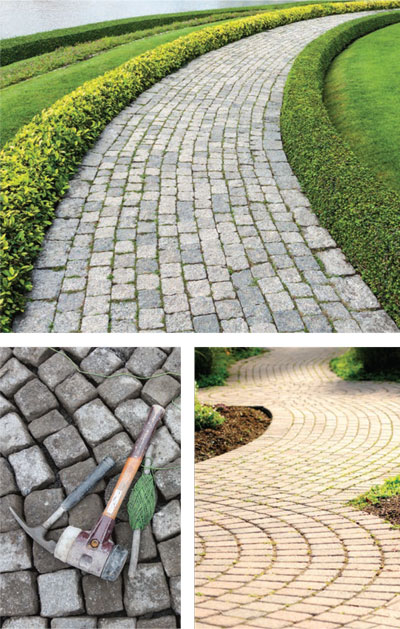 Additionally, the pavers themselves are specially fabricated to be porous. According to Maslow, even concrete used in permeable applications is a porous version. “Permeable pavers have more of a natural hydraulic balance,” he says. “They trap and slowly release water into the ground, rather than having water flow across the surface.” Maslow notes that there are also natural flagstones you can use in certain applications, if preferred, and that in this case, permeability will come from the construction of the base layer. When using freeform flagstone, fitting them closer together will allow more ease of furniture placement, while wider spacing offers a more natural look, especially when gaps are filled with plant material.
Additionally, the pavers themselves are specially fabricated to be porous. According to Maslow, even concrete used in permeable applications is a porous version. “Permeable pavers have more of a natural hydraulic balance,” he says. “They trap and slowly release water into the ground, rather than having water flow across the surface.” Maslow notes that there are also natural flagstones you can use in certain applications, if preferred, and that in this case, permeability will come from the construction of the base layer. When using freeform flagstone, fitting them closer together will allow more ease of furniture placement, while wider spacing offers a more natural look, especially when gaps are filled with plant material.
Boxley distributes several lines of permeable pavers, and Kepley says that they are just as attractive as clay or concrete pavers, if not indistinguishable. They are also ADA compliant, due to their even surfaces and minimal gaps between pavers.
“Our most popular sizes of permeable pavers are 6×6 and 6×9,” says Kepley, noting that these sizes offer a traditional look. “They can be installed in patterns such as a running bond [the classic staggered pattern often seen in brick], stacked bond [a simple side-by-side pattern], basketweave, and herringbone.” Each option varies in cost, ease of installation, amount of material required, and strength of finished product, so be sure to discuss the best choice for your landscape with your installer.
There are also options for the filler material between pavers, which is important for the filtration process. Small rock aggregate filters out both particulate and mineral matter that can be undesirable in large amounts when entering your landscape or local waterways. This small aggregate can be left as the finished look, or you can top it with pea gravel or a fine decomposed granite. An attractive option for naturalizing or softening the look of permeable hardscape is to place grass or ground cover plants between the pavers. Any hardy, low-growing plant (such as dwarf mondo grass or creeping thyme) or turf grass can be used, though of course grass will require regular weed-whacking to keep it looking good.
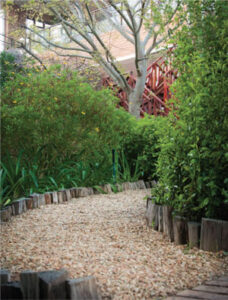 An alternative to permeable pavers is to hardscape an area with a natural stone aggregate, such as pea gravel, or crushed or decomposed granite. All of these options are charming—you’ll see this look everywhere from a country cottage to a European chateau. As you may know, pea gravel is a smooth, rounded stone about the size of a pea, which comes in a variety of hues. Crushed granite comes in various sizes, and will have small textured stones in neutral colors. Decomposed granite, often referred to as “DG”, has a finer grain, more sand- or silt-like in appearance. Each has potential positives and drawbacks depending upon your landscape needs. For example, DG is an excellent choice for a walkway, but can be tracked into the house on shoes, so don’t install it directly outside a door—have a few feet of buffer zone. Pea gravel offers a soft, attractive look and is great for drainage—you can even use it as mulch—but it can be tough to wheel a lawn mower, wheelbarrow, or bicycle across, so consider location and usage before choosing this option.
An alternative to permeable pavers is to hardscape an area with a natural stone aggregate, such as pea gravel, or crushed or decomposed granite. All of these options are charming—you’ll see this look everywhere from a country cottage to a European chateau. As you may know, pea gravel is a smooth, rounded stone about the size of a pea, which comes in a variety of hues. Crushed granite comes in various sizes, and will have small textured stones in neutral colors. Decomposed granite, often referred to as “DG”, has a finer grain, more sand- or silt-like in appearance. Each has potential positives and drawbacks depending upon your landscape needs. For example, DG is an excellent choice for a walkway, but can be tracked into the house on shoes, so don’t install it directly outside a door—have a few feet of buffer zone. Pea gravel offers a soft, attractive look and is great for drainage—you can even use it as mulch—but it can be tough to wheel a lawn mower, wheelbarrow, or bicycle across, so consider location and usage before choosing this option.
No matter which finished look appeals to you, keep in mind that the top layer is the tip of the iceberg, so to speak. When choosing permeable hardscape, you are installing a system as much as an aesthetic feature. As Maslow points out, “With successful permeable hardscape, the majority happens underground, where you don’t see it.”
Estimating cost
Because proper preparation of the site is the key to success, you can expect to pay more for permeable hardscape than traditional. Part of that is because you have to dig deeper to install the materials, and part of that is the amount of materials itself. Maslow estimates that permeable hardscape can cost anywhere from 20 to 50 percent more than traditional hardscape, depending on materials and the site, but adds, “Right now, it’s used [in residential spaces] because it’s eco-friendly and helps drainage issues, but soon it will be required.” He notes that while it’s already mandatory in commercial areas, a lot of his colleagues in Northern Virginia are required to have a percentage of their projects done in permeable surfaces, and he expects that trend to make its way here in the next five years or so.
Installation
Kepley says that driveways, patios, and sidewalks are all good candidates for permeable hardscape. “Anywhere you want to get rid of standing water,” he notes. But there are location considerations. “You can lay permeable on a bit of a slope, but it doesn’t perform best,” says Maslow, because it’s harder to control run-off on an incline. Also, you want to stay away from the ‘drip edge’ of any trees, because the excavation required will have a negative impact on root systems.
With the proper location identified, the first step of the process is to level the site and excavate down to the required depth. Maslow says, “We excavate down a minimum of twelve inches below the finished surfaces, but it can be as much as eighteen to twenty-four.” Deeper excavations tend to be for vehicular and commercial applications.
Once the proper depth is reached, a sub-drainage system may be needed to pipe away excess water, particularly if being installed in clay soil. This under drain (also referred to as a “French drain” or “tile drainage”), says Maslow, is built by laying down a geotextile (i.e. permeable) fabric to filter water and stabilize the soil, then placing a perforated pipe that is routed to either a stormwater drain or some sort of bio-retention filter for emergency overflow.
From there, drainage stone is added to cover the base of the permeable structure. “It has to be clean aggregate,” says Maslow, with no fine material that can clog the system. Kepley says that the lower substrate, or sub-base, will be larger gravel of about 1½ inches or more in diameter. Above that may be a base of ¾ inch gravel, followed by a layer of smaller bedding stone, on which pavers are placed. Bedding stone, such as pea gravel, is also used to fill the spaces between the pavers.
Given the technical know-how required for successful ponding and run-off management, it’s a good idea to make sure your hardscape professional is ICPI-certified. The Interlocking Concrete Pavement Institute sets a national standard to ensure that projects will stand up to a lifetime of use, so be sure to ask about both certification and prior experience before installing permeable hardscape.
With so many attractive and eco-friendly options available, there has never been a better time to embrace the benefits of permeable hardscape. Alleviating drainage issues and increasing the usability of your outdoor areas are excellent reasons to go permeable. But using permeable hardscape offers the additional advantages of doing your part to filter and recharge groundwater reservoirs, as well as protecting local waterways. It’s a green trend that’s here to stay.
Current Issue, green, Hardscape, natural stone, outdoor spaces
